Porridge (porage, porrige, or parritch) is a common food eaten as a breakfast cereal dish. It is simply made by boiling ground, crushed starchy plant (typically grain), in water or milk. Most often cooked or served with addition of sugar, honey, (dried) fruit or syrup to make a sweet cereal. It can be as well served as a savory dish, then it is mixed with spices, meat, or vegetables. Generally served hot in a bowl. From the known porridges, the oat porridge, or oatmeal, is one of the most common types, but there are other grains across the world, used for making this versatile dish: rice, wheat, barley, corn, triticale, and buckwheat. Many types of porridge have their own names, such as polenta, grits, and kasha. A lot looser consistency, almost liquid (perfect for drinking in a cup), version of porridge is called a Gruel, and its being prepared worldwide a well.

The porridge itself, is a food staple for a poor working people. It is believed by scientists and archaeologists, that is during the Neolithic and Paleolithic eras, our ancestors, hunter – gatherers, were already eating an early type of porridges, to keep their stomach full. The porridge in modern days, is commonly associated with Scotland, thanks to growth of oat grains there, and becoming sustainable food for a local people through generations.
Kasha, Russia
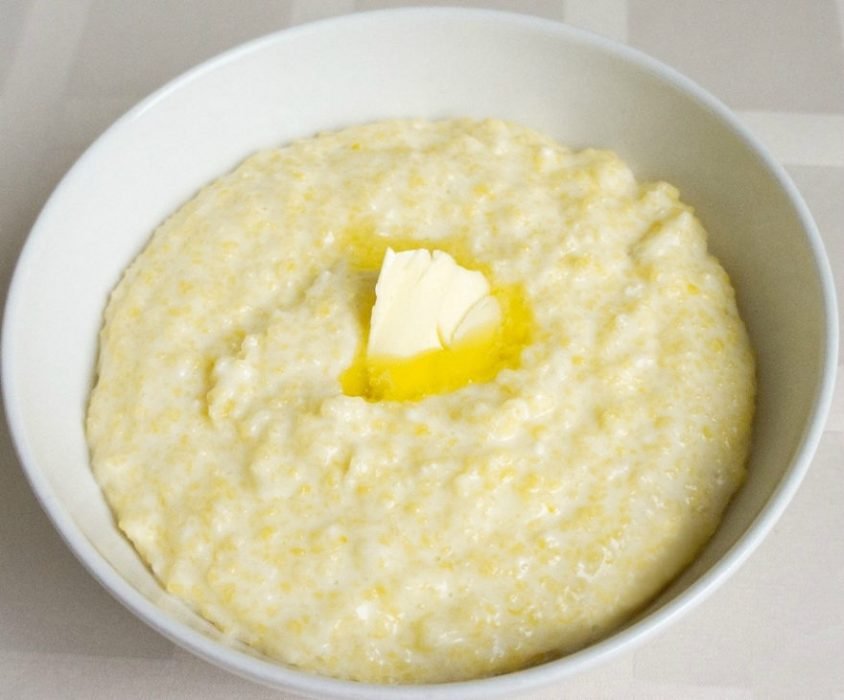
one of the essential dishes of Russian cuisine. The term kasha describes variety of dishes which are created with cereals, most commonly rice, wheat, or millet, buckwheat, and quinoa. The dish is typically boiled in water and milk. It can be savory or sweet. Usually comes with additions of fresh or dried fruit, preserves, cheese, butter, vegetables, nuts, or honey. In the older days, the porridge was prepared in cast iron pots and left to slowly baked in the oven during the night.
Congee, Japan, Singapore, China, India, Hong Kong, Philippines, Indonesia, Korea
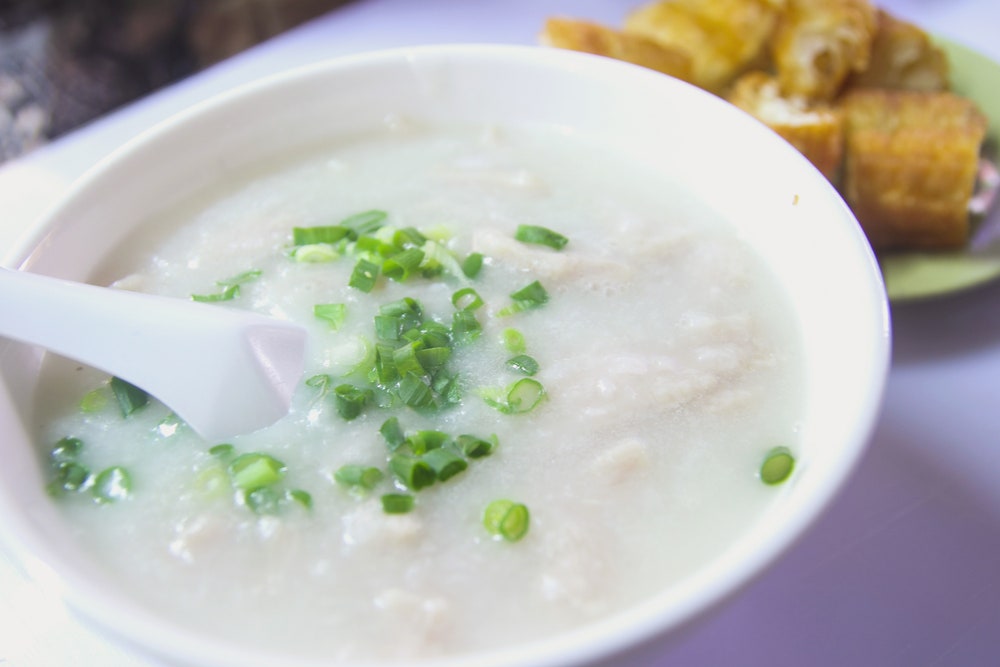
Rice porridge or gruel. It can be eaten plain, served with different side dishes, or it can be a full mal on its own, when extra ingredients (meat, fish, flavorings) are added. Even Though there are many variations, it is usually a thick porridge of rice heavily “melted” after lengthy cooking in water.
Kayu, Japan
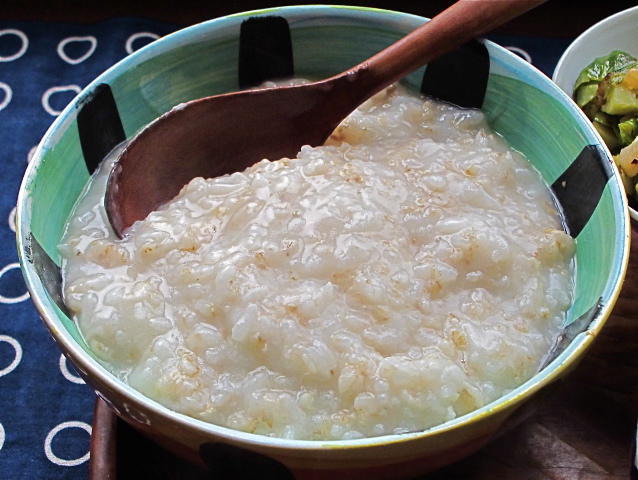
It is a rice porridge. In Japan it is the equal to chicken soup in times of sickness, a universal cure for cold and fever. It is remarkably simple dish, basically involving only two ingredients: rice and water. Since the ratio of water to the rice is far much greater, it is a common diet dish. Due to its mild flavor, Kayu is being served as a breakfast dish. In some variations the rice is often cooked in seasoned stock (dashi or miso) to enhance the flavors of the porridge.
Polenta, Italy
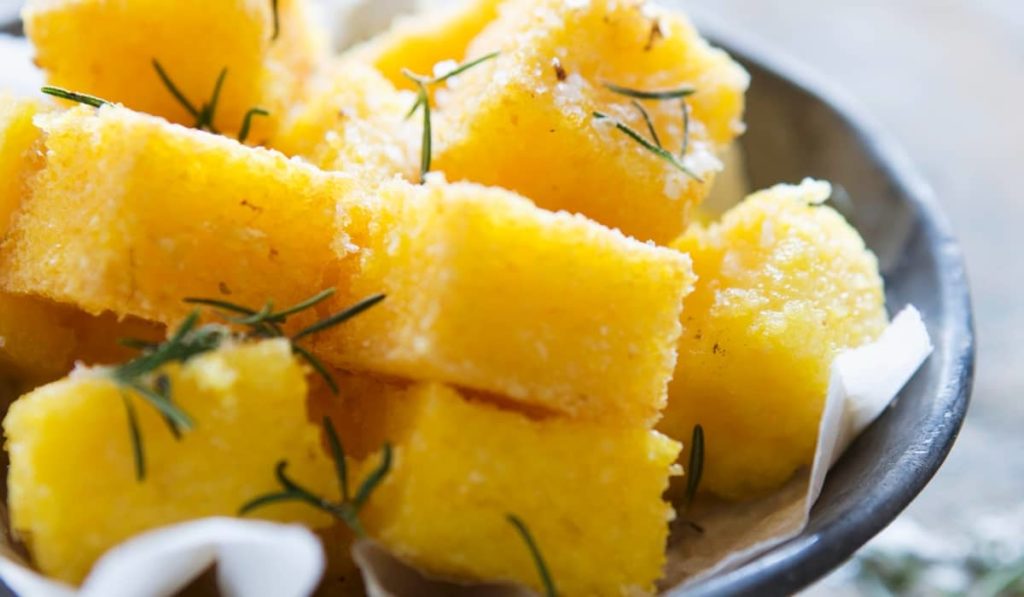
Dish made already in ancient times in Northern Italy. Commonly made from coarse corn flour cooked in water. Before the arrival of corn in Europe in the 16th century, polenta it was made with spelt, rye, and buckwheat, which gave it a much darker color, when today we know polenta as light-yellow color (thanks to the corn). Generally, the boiled polenta is transferred onto a flat surface and left to cool and harden. The cooled polenta cake/slab is then traditionally cut into slices. It is immensely versatile dish. It can be used to replace bread or pasta, it can serve as a side to meats, it can even be grilled and served with vegetables.
Grits, USA
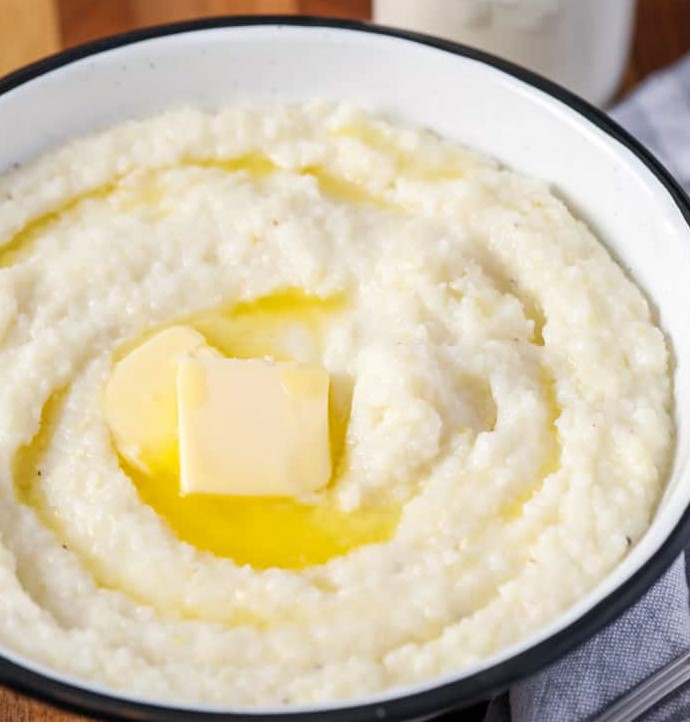
The name comes from an Old English word “grytt”, meaning coarse meal. This dish was present in American lands, centuries ago, when the Native Americans were boiling the crushed grains of corn, in water, and eat them as a first meal of the day. Its is often mistaken for being the same as polenta, but there are differences of: the fineness of the grind, taste, and texture, between the two. The tick grit porridge is served with additional flavorings and spices, and its mostly savory on flavor profile (famous shrimp and grits).
Upma, India
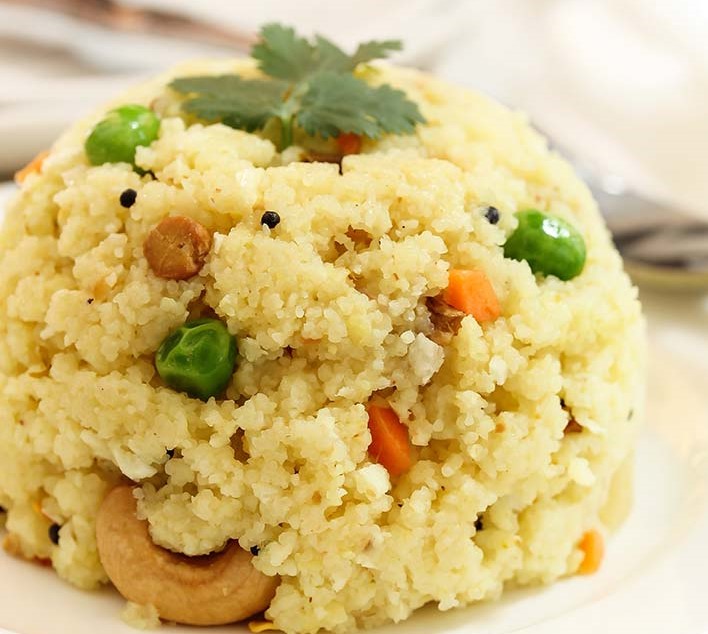
nutritious Indian dish made with dry semolina or rice flour, cooked into a thick porridge consistency. Usually served hot for breakfast. Since its taste is somewhat bland, additional ingredients, topping or spices (nuts, beans, and spices such as turmeric and chiles) are added to make it more pleasant and tasty. Every cook, every family has its recipe, with its own blend of spices, toppings, and additions. So, it is said, that is in whole India, there are no two the same Upma dishes.
Mămăligă, Romania
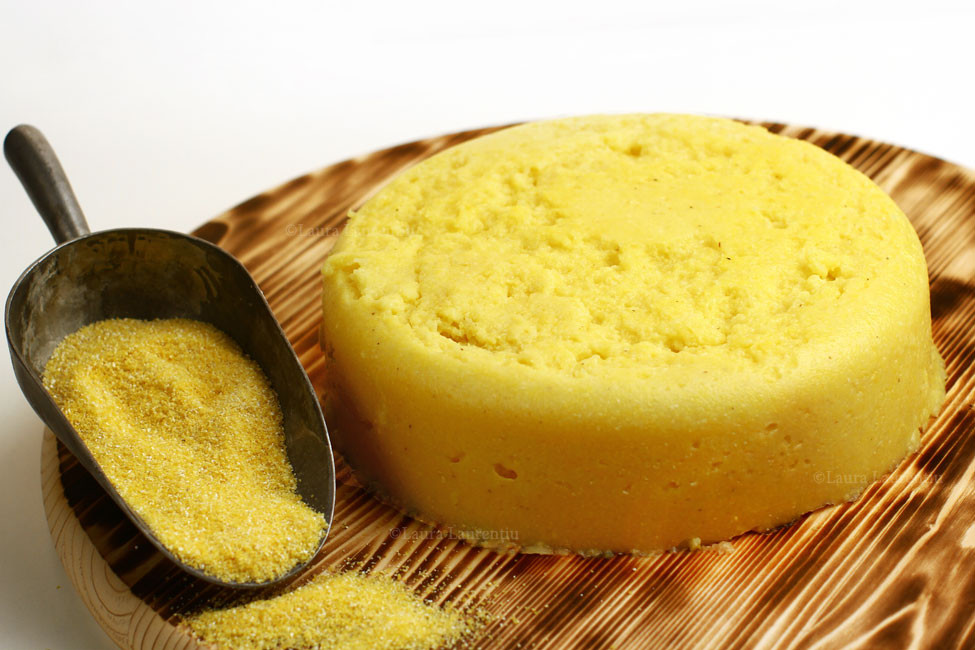
This is Romanian national dish. It is a remarkably simple dish of boiled cornmeal, that is makes it confused with polenta, from time to time. The dish was cooked mostly by farmers in the past, often being a replacement for bread. Mămăligă is often topped with butter, sour cream, or cascaval cheese
Bubur ayam, Indonesia
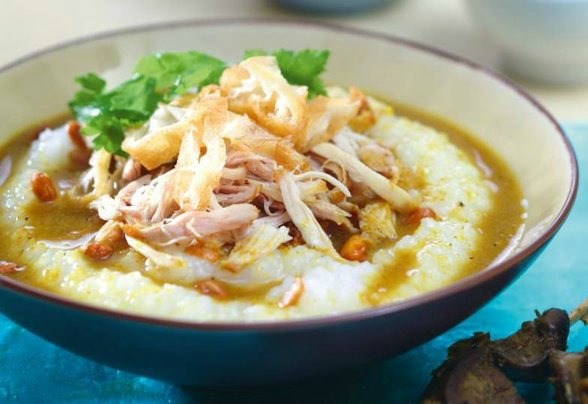
Indonesian version of chicken congee (thick rice porridge) topped with shredded chicken and various savory condiments: sliced scallions, crispy fried shallots, chopped cilantro, crushed peanuts, fried crullers, and sliced boiled eggs. Before it is served, Bubur ayam is usually generously drizzled with soy sauce, sesame oil, fish sauce, or even Sambal (spicy sauce). Originated probably as a local variation (use of regionally available ingredients and toppings), of Chinese Rice porridge. Simply made with boiling chicken (dark meat preferably, still on the bone), and then, the same broth is used to cook the rice until it becomes quite dense in consistency.
Piraõ, Brazil
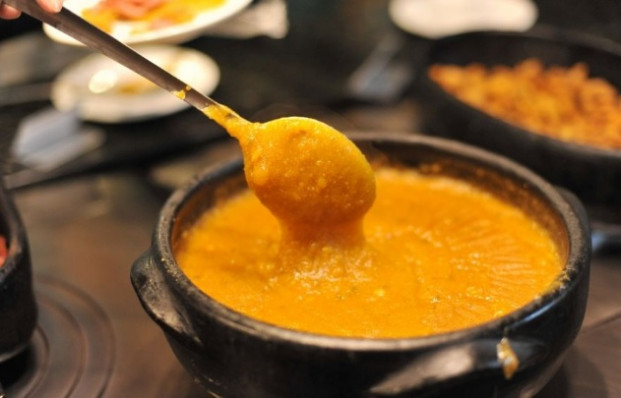
quintessential Brazilian side dish, which look like a watered-down porridge or polenta. Mainly prepared by stirring manioc (cassava) flour in various flavorful meat or seafood broths. There are many regional varieties, depending on the ingredients or seasoning of the main liquid. It is mostly served as an accompaniment to rice and numerous meat and seafood dishes.
Ghomi, Georgia
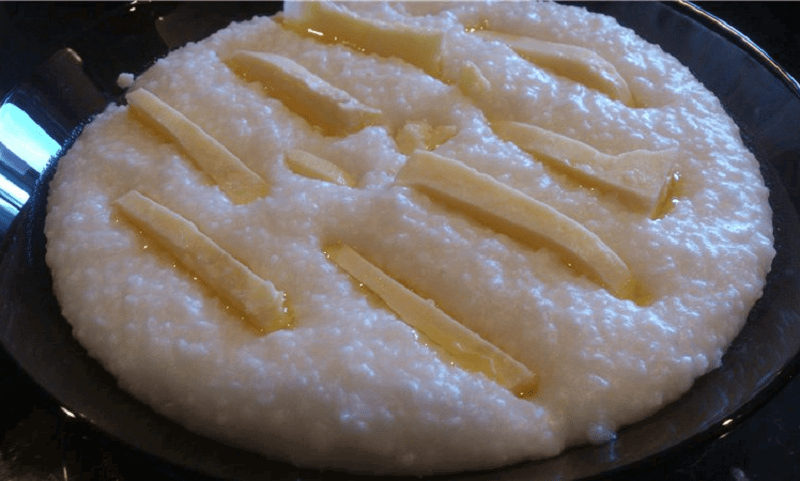
Georgian traditional dish, involving coarse and fine corn flour combined with water. Usually more on the savory side of flavor. While is just cooked, pieces of cheese are placed in the hot porridge to melt before eating. The dish is often served with different sauces on the side (tkemali or bazhe).
Lugaw, Philippines
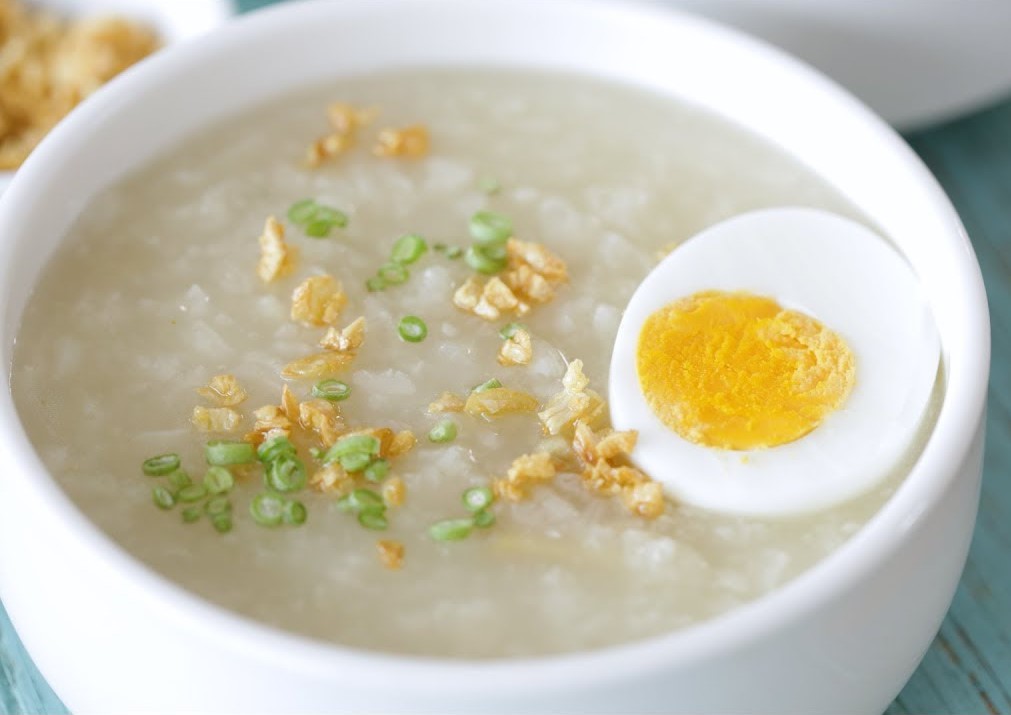
Filipino rice porridge. Warm, filling, and mushy, the dish is an ideal base for any type of meat and seasonings. Usually eaten for breakfast or as a snack. Many cooks like to add chicken, lemon, and ginger to improve the flavors of the dish. After that, it can be flavored with typical Filipino ingredients: scallions, garlic chips, sliced hard-boiled eggs, calamansi, or fish sauce.
Scottish porridge, Scotland
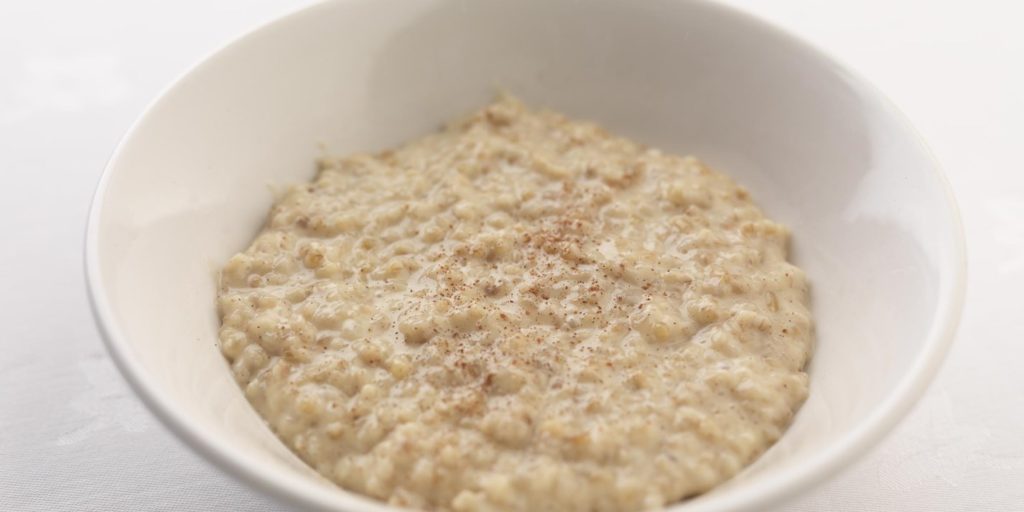
Oats are cultivated and eaten in Scotland for centuries. Nutritious and flavorsome dish containing high amounts of fiber, vitamins, and minerals. By Tradition, cooked in water with a pinch of salt, stirred clockwise (to protect oneself from the Devil). It is then served in bowls while still hot. Sometimes served with an addition of milk, dried fruits, and brown sugar, for a sweeter taste.
*Fun Fact: There a traditional way of eating it, while standing up. It is a custom left over from busy farmers who were simultaneously working and eating their breakfast.
La bouillie, Chad
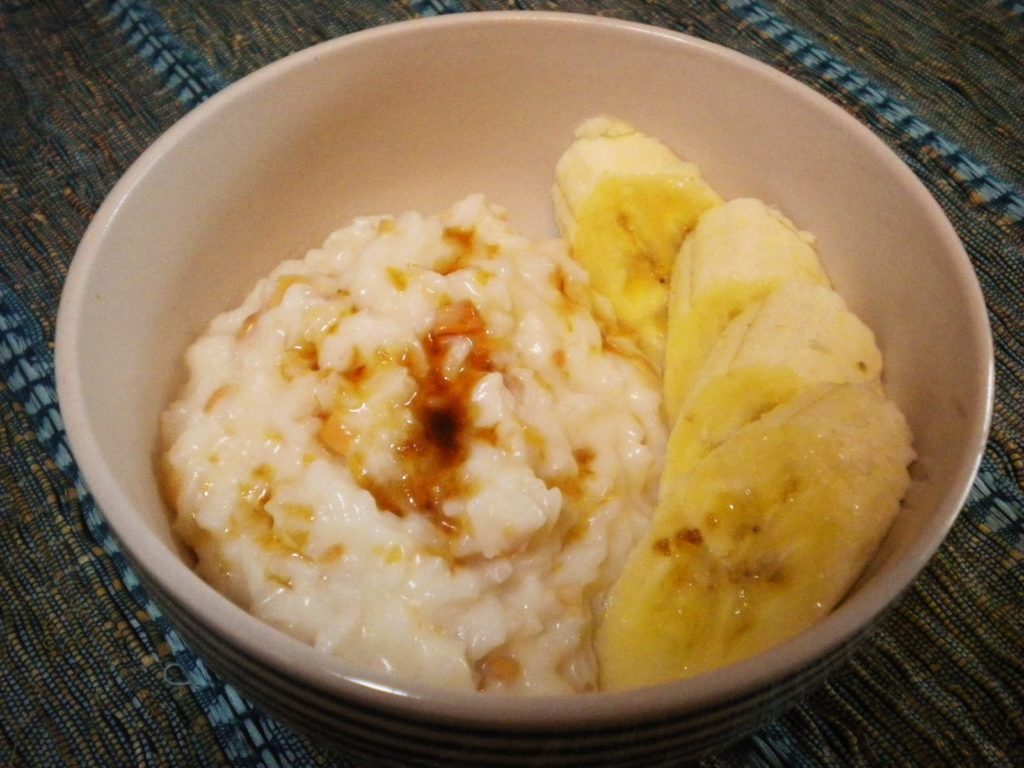
Very traditional Chadian breakfast dish. Made with rice or wheat combined with milk, flour, and peanut butter. The dish is always served hot after it has been boiled to a thick consistency. It has many varieties, with a use of different ingredients and flavors.
Genfo, Ethiopia
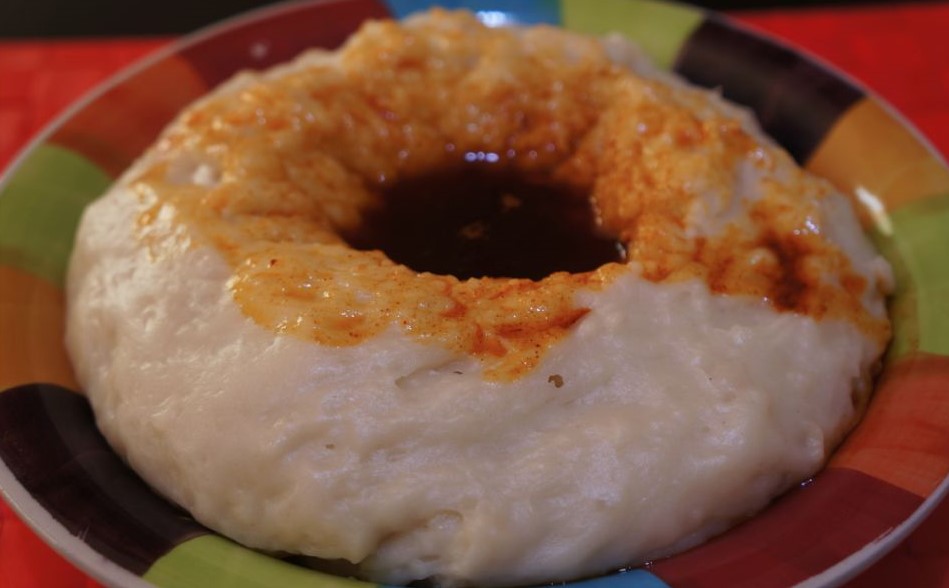
Ethiopian porridge that is commonly eaten for breakfast. Barley flour (dry-roasted) added to boiling water and stirred (always with a wooden spoon) until it creates smooth, but extremely thick consistency. The porridge is immediately transferred to a bowl, and a hole is created in the center, that is filled with clarified spiced butter and berbere spices. This dish is a communal meal, shared and consumed by pulling the thick porridge pieces from the outside and dipping them into the spice blend in the center.
Kama, Estonia
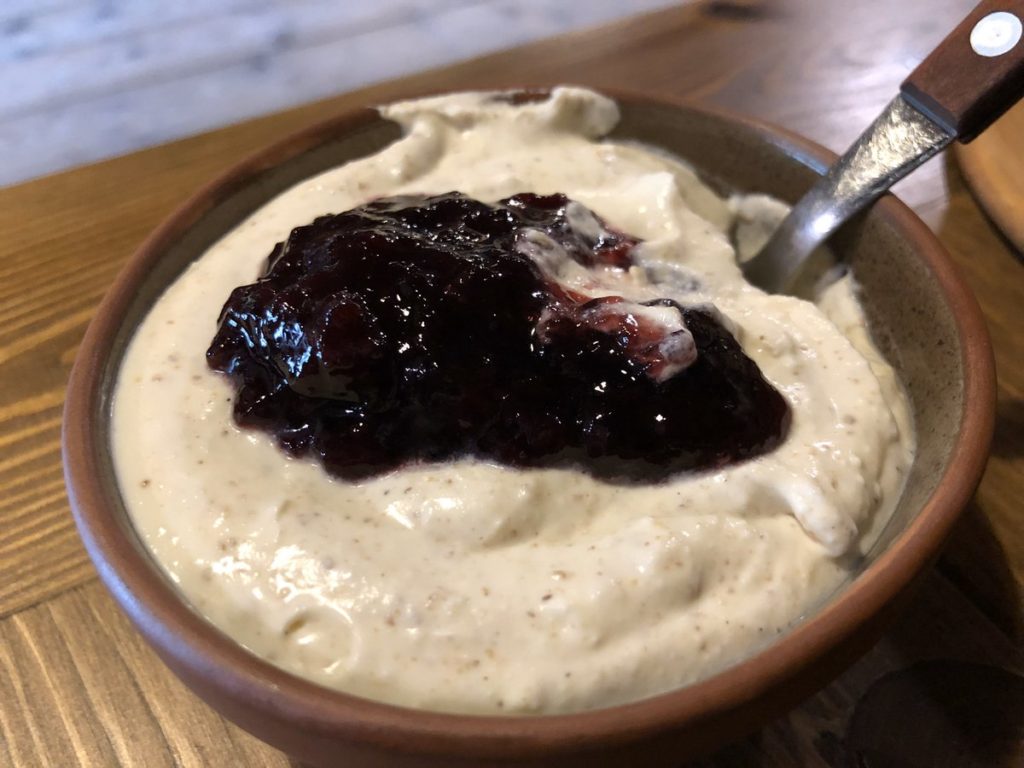
Combination of roasted and thinly milled flour (oat, rye, barley, and pea flour) combined with liquid dairy product (buttermilk, kefir, or sour milk) creates thick and creamy dish or a thinner variant that can be enjoyed as a drink. Usually served as a nutritious breakfast or a healthy dessert that is often served with fresh fruits, for additional sweetness. Nowadays, because of intense labor required to make this dish, most people reaching out for the instant, package version.
Guriev Kasha, Russia
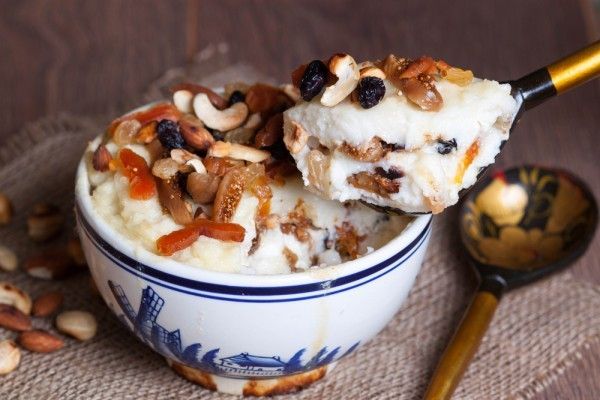
traditional Russian semolina porridge. Quite unique in preparation and appearance. semolina is cooked in water, while milk or cream is baked in the oven. The crust formed on top is removed and used to separate the semolina layers. Layers of nuts, fruits, or jams are assembled between the milk crust and the semolina filling. Right before serving, typically sprinkled with sugar, and baked until a crispy skin is formed on top.
Hasty Pudding, USA
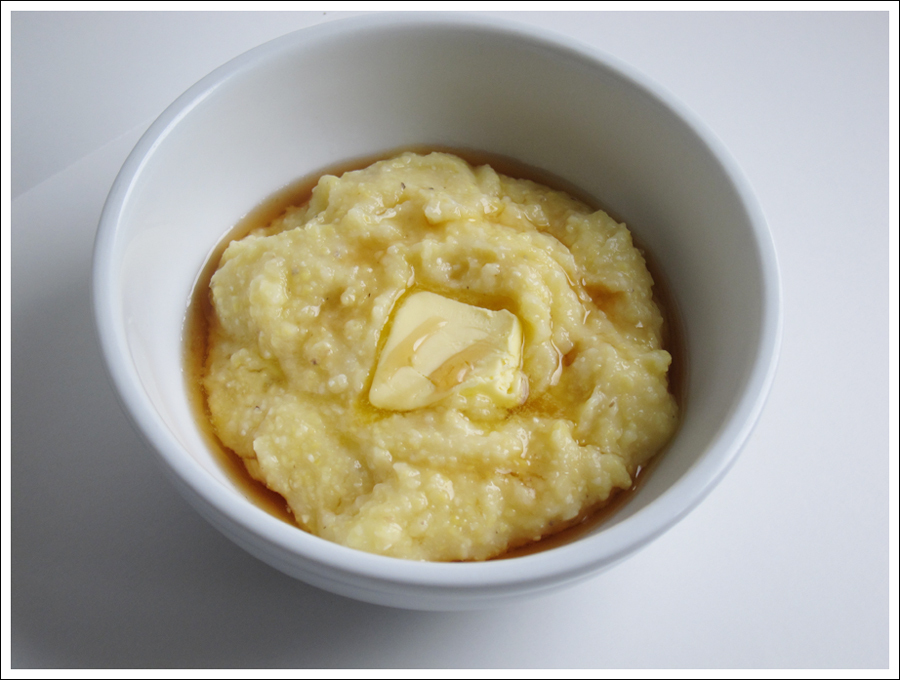
Quick in preparation (that is how the name came to be) mush of cornmeal or wheat flour that is stirred to a thick batter in water or milk. Always served warm, often topped with a scoop of ice cream or a dollop of whipped cream. There are some variations with addition of raisins, spices, sugar, or molasses to improve its quite simplistic flavors.
Funje, Angola
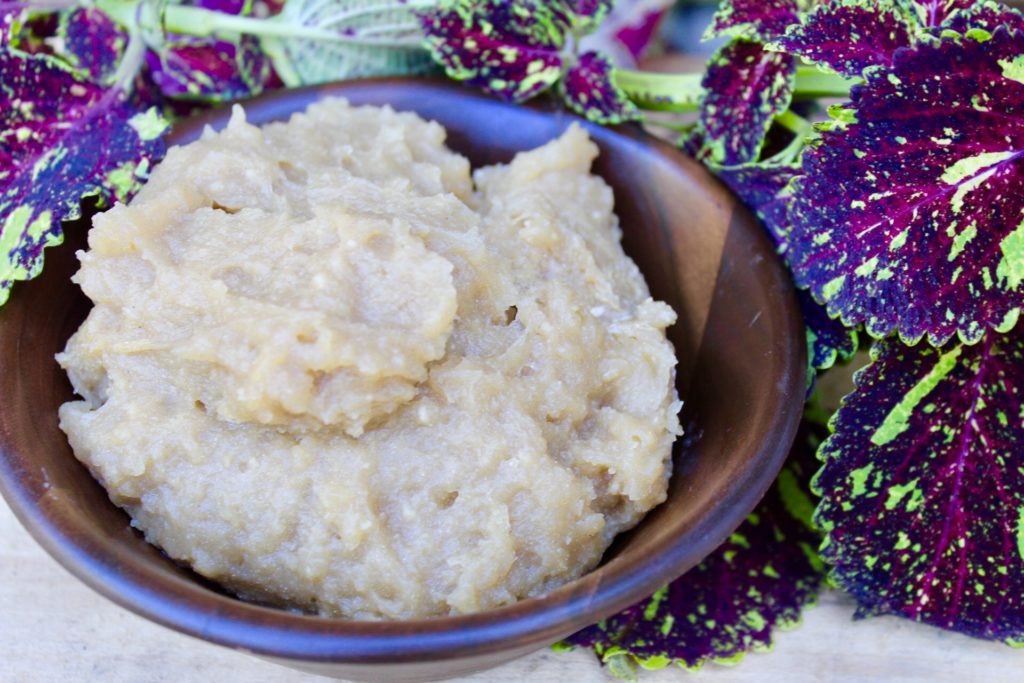
One of the few most popular foods in Angola. This porridge is made from cassava flour that is stirred into water, that is gives sticky, smooth, and creamy texture, with a slightly bland flavor. Traditionally in the most basic form, Funje is served with spicy sauce. It is an indispensable side dish accompanying breakfast, lunch, and dinner meals in many households throughout the country.
Phutu, South Africa
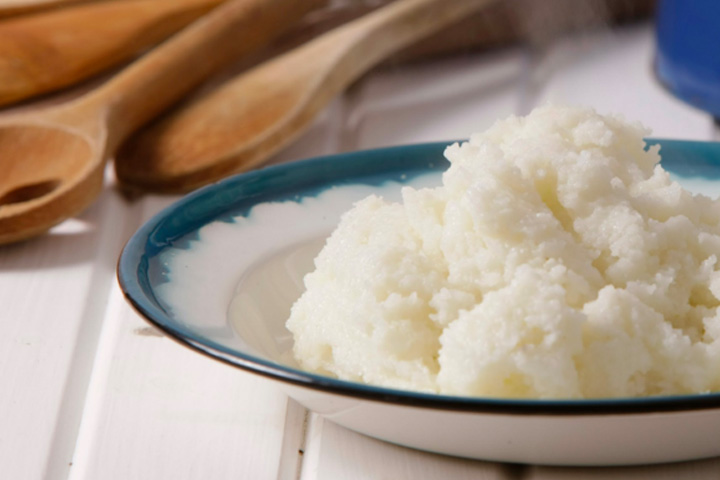
traditional South African porridge. It is made by steaming maize meal until it turns into a crumbly, grainy texture. Typically accompanied by vegetables, sour milk, beans, or meat. It is one of the staple foods in the country, and it is regularly eaten in most homes.
Nshima, Zambia and Mozambique
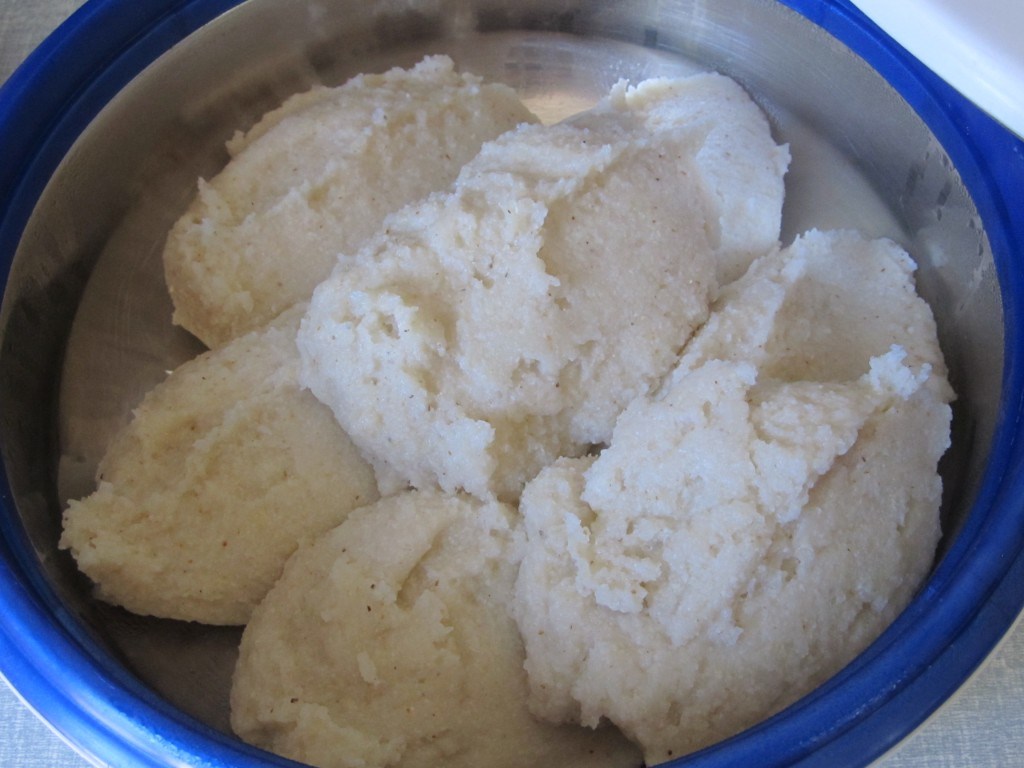
staple food in East African parts (quite like the Kenyan ugali and the Zimbabwean Sadza). Very thick and smooth porridge made from ground maize. Nshima is always consumed with soups, sauces, or stews. Smaller pieces of Nshima are typically torn by hand, from the whole piece, and Nshima is then used to scoop up or dip in various dishes.
Melkkos, South Africa
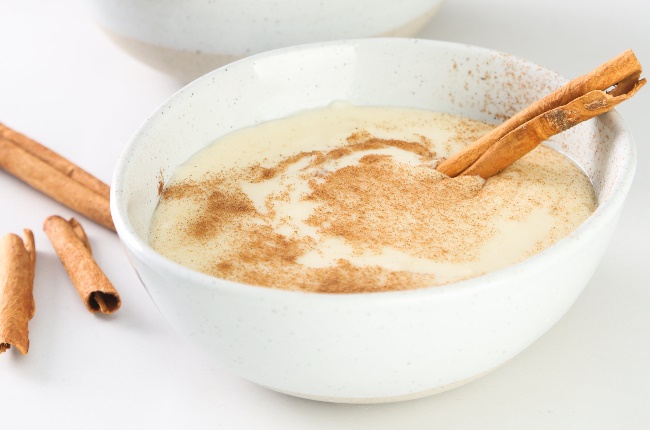
South African staple. Boiling milk is combined with a mixture of flour, salt, and butter. Stirred until lumpy consistency id archived. It us extremally popular, during colder months. Usually, a dessert type dish or a light meal. Always serve it hot with some cinnamon sugar on top.
Øllebrød, Denmark
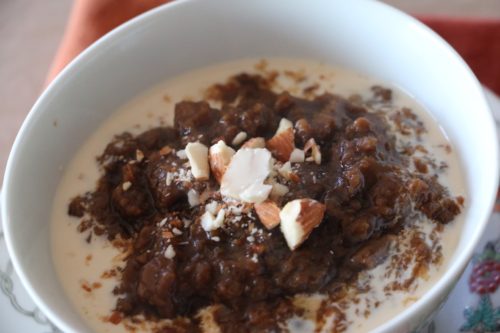
Danish rye bread porridge served as a sweet and nutritious breakfast. The main ingredient is a tale rye bread soaked in water, milk, or traditional Danish beer, which is later cooked until it achieves a thick, smooth texture. Lots of modern varieties incorporate various additions such as whipped cream, citrus zest, raisins, and nuts to create a more healthful meal.
Pease Pudding, England
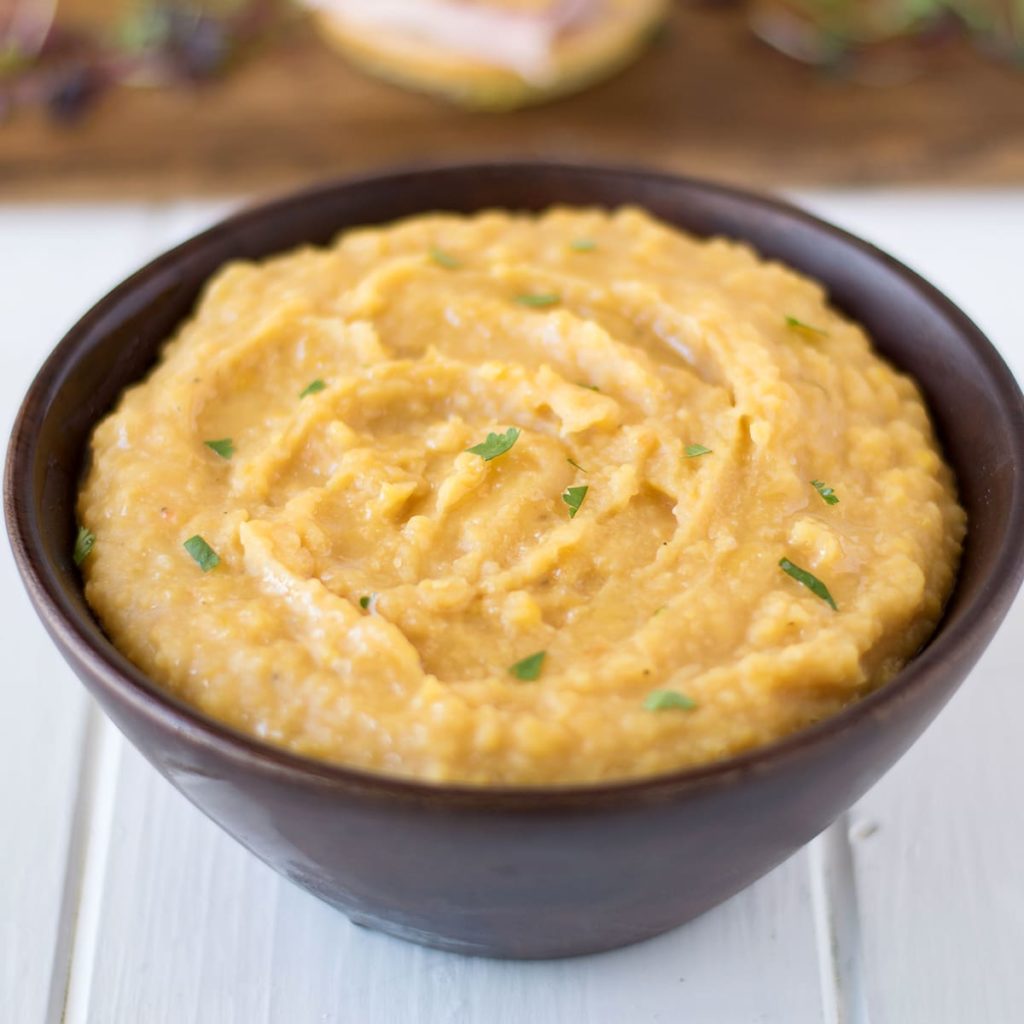
Dish from England involving boiled peas, seasoned (salt and other spices), and then cooked together with bacon or ham for extra flavor. The result is a thick porridge with mild, yet rich flavors. Originally, Pease pudding was cooked in large cauldrons which were hanging over an open fire.
Kinche, Ethiopia
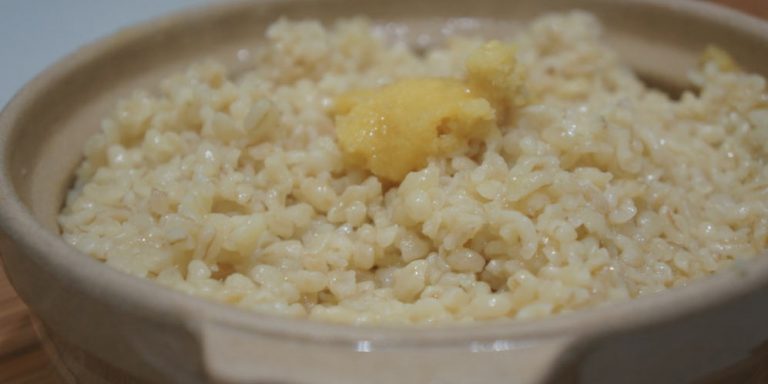
Ethiopian breakfast essential, made with cracked wheat that is boiled in any water or milk. The Ethiopian equivalent of oatmeal. After it has been cooked, the mixture is added to the pan with either clarified spiced butter known as (niter qibe) or with oil and fried onions.
Kavut, Turkey
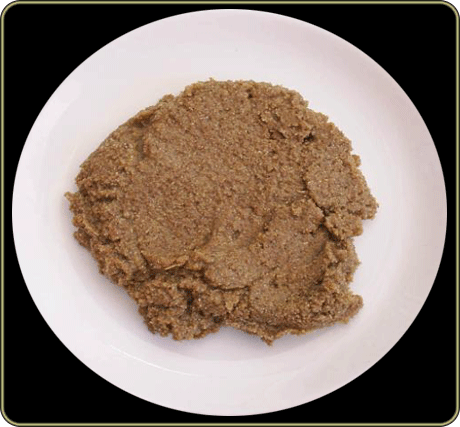
combination of whole-meal wheat and barley grains roasted and ground, often by stone milling. It is cooked with milk, butter, and sugar comes to the consistency of a porridge. After removal from the heat, the well is made in the center. Honey or light sugar syrup with butter is poured in the well, and the dish is then eaten with spoons by dipping them into the syrup.
Mannapuuro, Finland
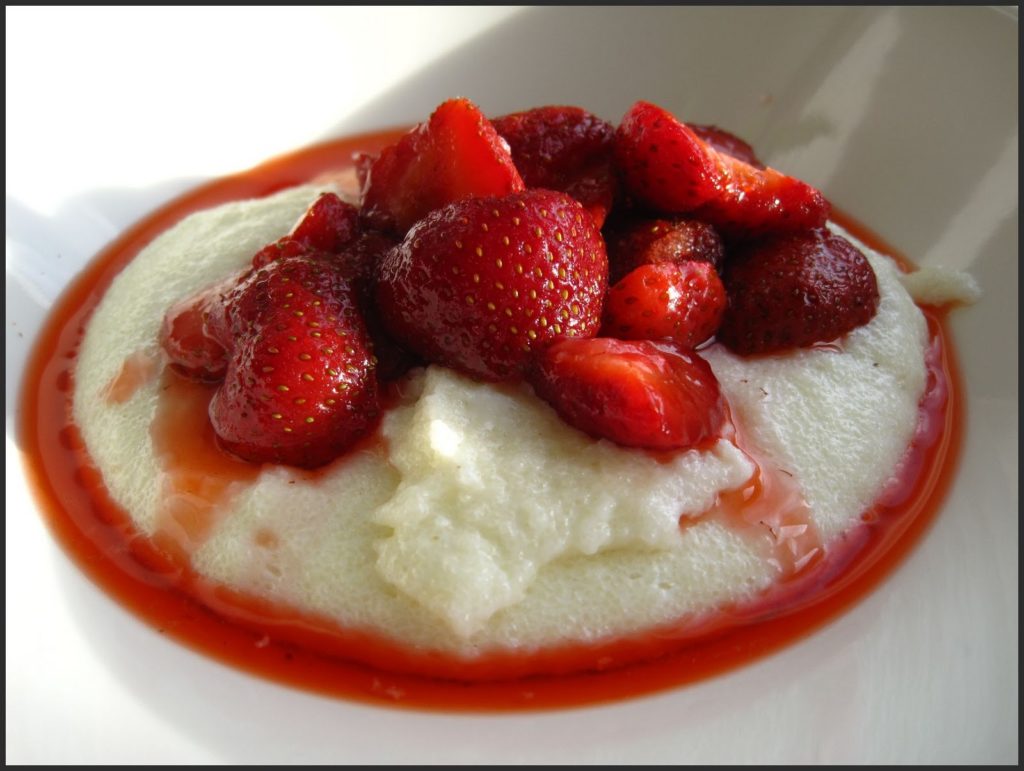
creamy semolina porridge is a traditional and nutritious breakfast in Finland. It can be as well a light snack, or a simple dessert. Generally served warm, delicately sweetened, and drizzled with butter. It is suggested to embellish it with fresh fruit or jam preserves.
Xarém, Portugal
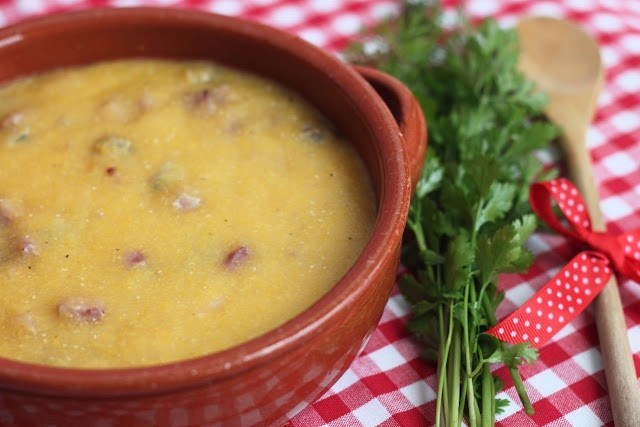
Portuguese maize porridge, that has plenty of local versions. The most popular recipe is a combination of corn flour, white wine, clams, smoked bacon, ham, pork sausages, and seasonings. The meats are chopped and fried over low flames, mixed with boiled clams, and finally whipped into corn flour mixture. The dish is traditionally served bubbling hot.
Sadza, Zimbabwe
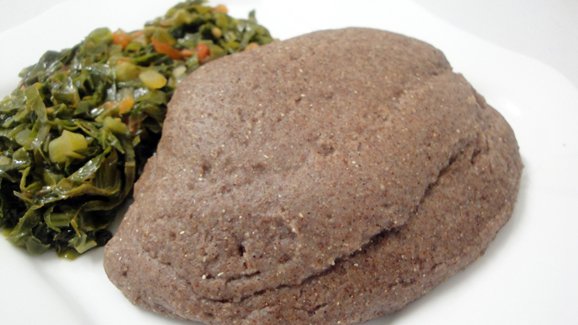
Mabela/Sorghum porridge or Sadza remapfunde is a traditional corn meal porridge from Zimbabwe. Traditionally it can be served at any time of the day, whether for breakfast, lunch, or dinner. Sadza is usually served hot as a side dish accompanying meat or vegetable stews.
*Fun Fact: Sadza is one of the first foods given to babies in Zimbabwe.
Pap, Namibia
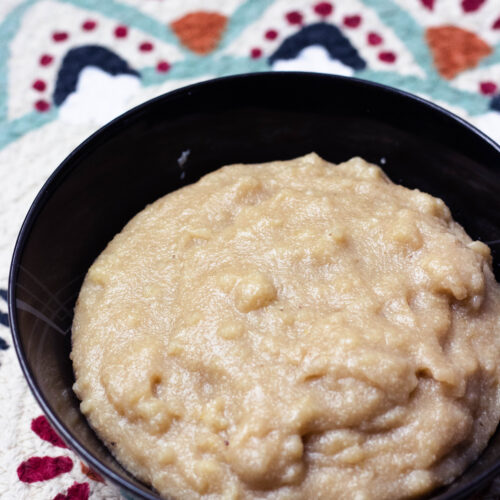
Meat and pap are the informal national dish of Namibia. It does not have an exciting appearance: look like a white gloopy, but smooth mass. The Pap is a porridge made from ground maize, except for the north part of the country, where the Pap is made from pearl millet (mahangu). Usually accompanied by meat, but it can also be eaten with cabbage or fish.
Ngalakh, Senegal
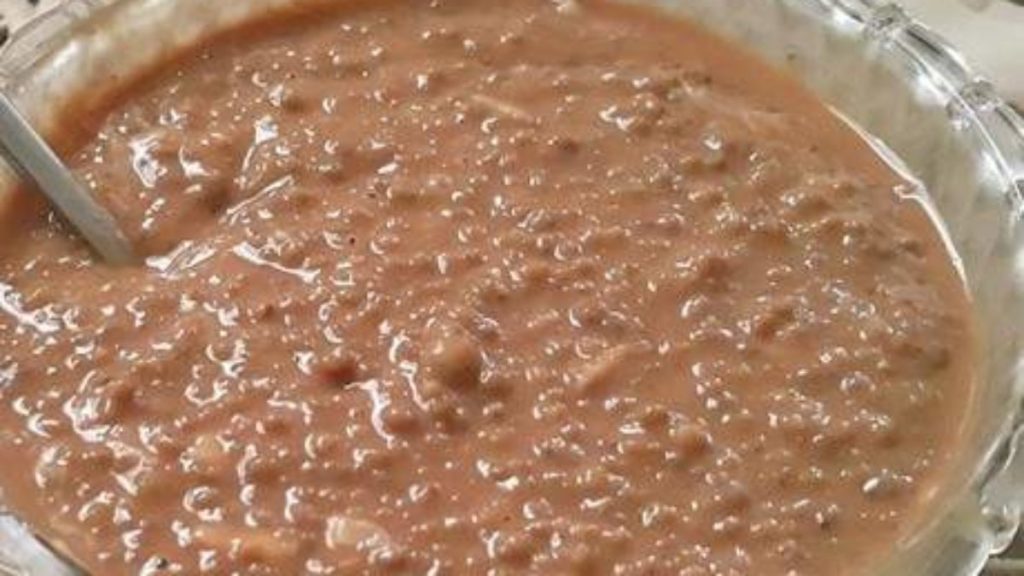
Sweet Senegalese millet porridge. By Tradition flavored with baobab cream, peanut butter, or sweet yogurt. It is typically served as a dessert. Served and eaten well chilled, sprinkle it with sugar on top.
Mayi moulen, Haiti
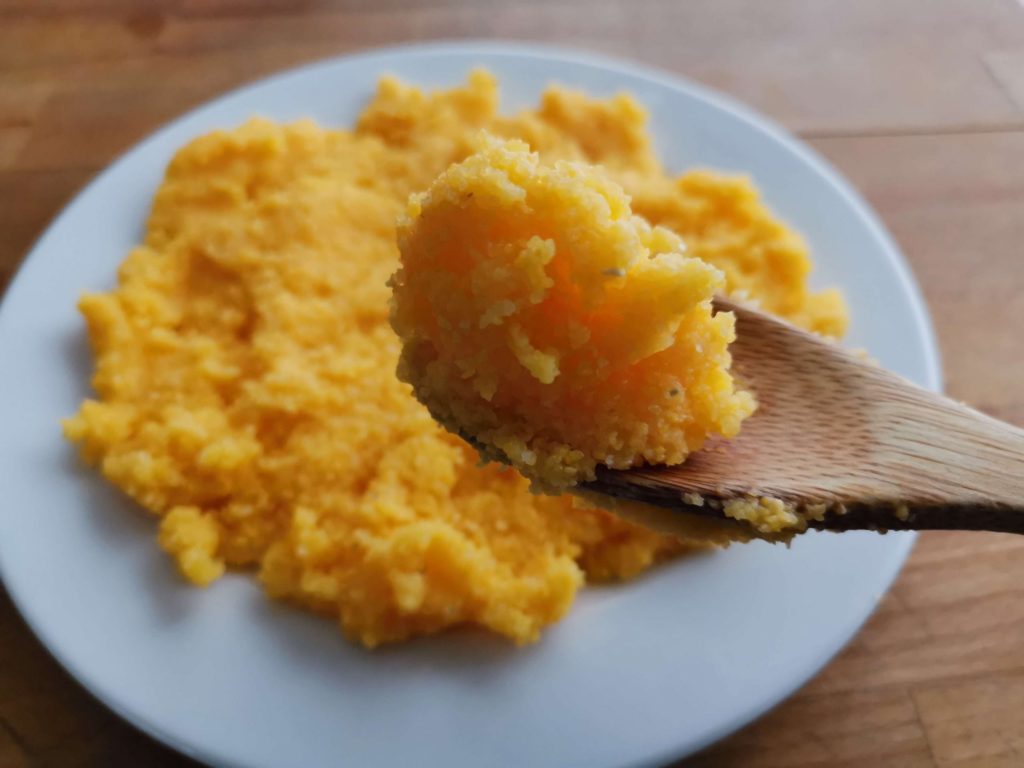
Haitian staple. Yellow cornmeal cooked in water and mixed with garlic, butter, and salt. Very quick and easy to prepare, which make it so popular dish, throughout the day. Mayi moulen is most often paired with salt fish (mori) or a black bean purée (sos pwa). Serve it hot with avocado slices on the side.
Helmipuuro, Finland
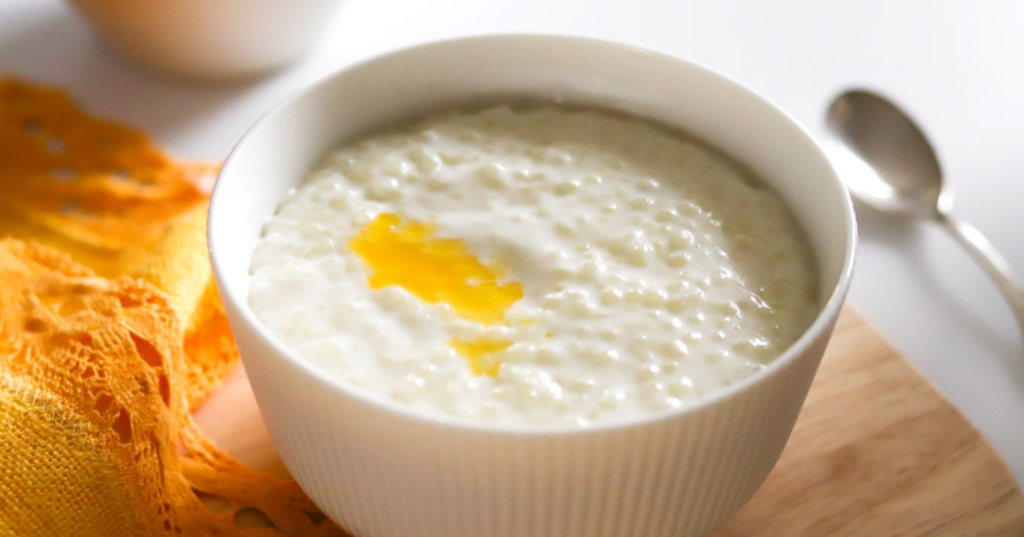
pearl porridge from Finland. Dehydrated potato granules are combined with boiling milk. When they absorb the hot liquid, they swell and turn into translucent, pearl-like orbs. The porridge is usually enjoyed as a hearty breakfast, sweetened, and accompanied by various fresh fruits or jam preserves.
Krentjebrij, Netherlands
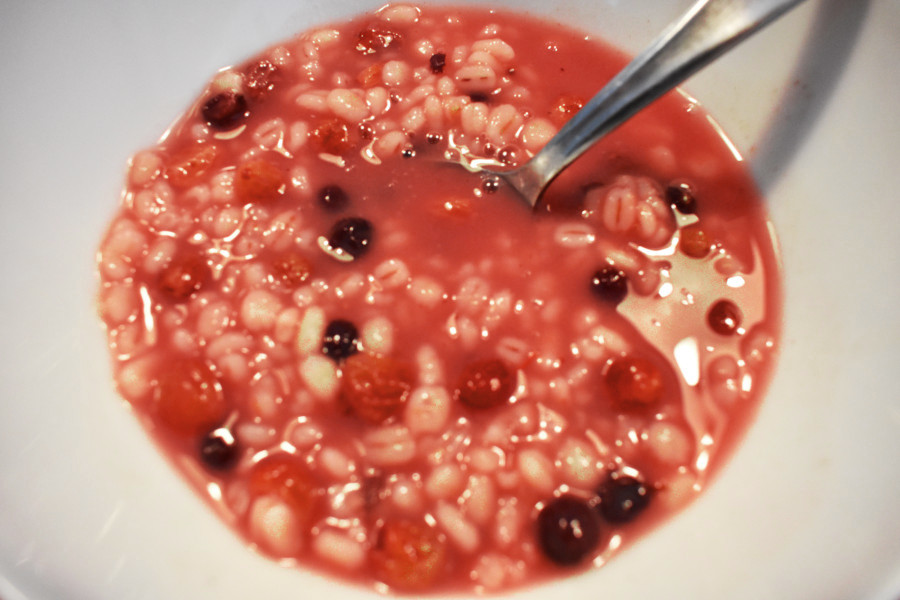
delicious Dutch porridge, that can be served hot or fully chilled. It is a porridge that looks like thick soup with fresh berries as its key ingredient. It consists as well pearl barley, raisins, currants, lemon peel, and sugar. It is fine to use strawberries, red currants, blackberries, and raspberries, but at the end, any berry variety will do. Krentjebrij is sometimes flavored with cinnamon, and taste the best served with a dollop of heavy cream on top.
Klappgröt, Sweden
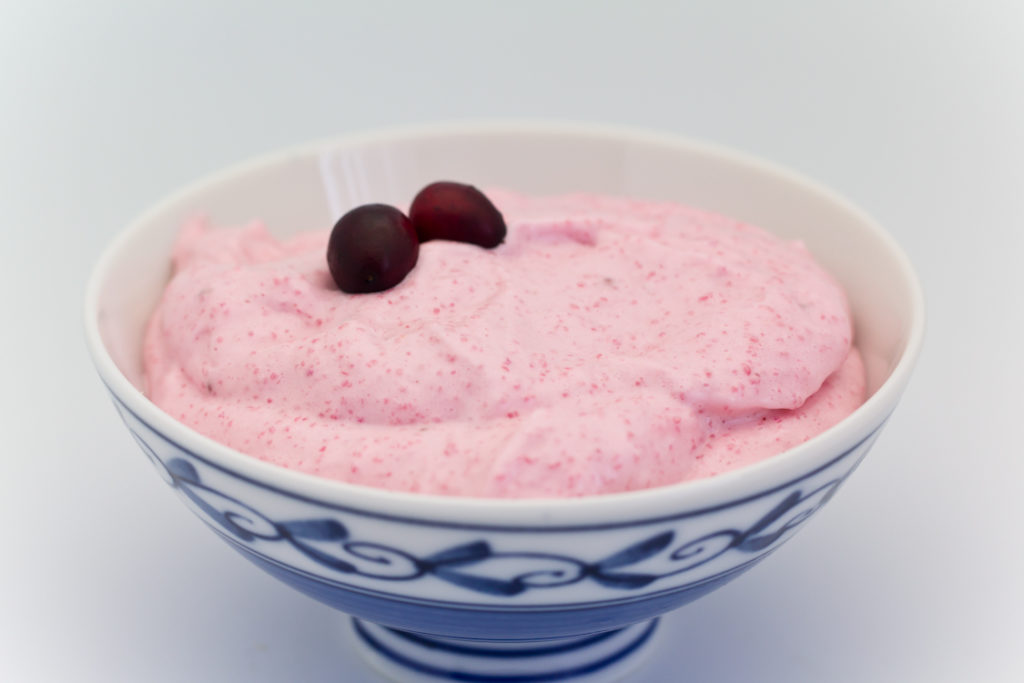
Deliciously sweet Swedish porridge. Mixture of semolina (mannagryn), water, and sugar, which is cooked, and combined with sweetened berry juice (typically lingonberry). The mixture is then whipped until light and fluffy, and served by itself, or in a company of milk or whipped cream. Some alternative recipes use jams or berries instead of berry juice.
Dikgobe, Botswana
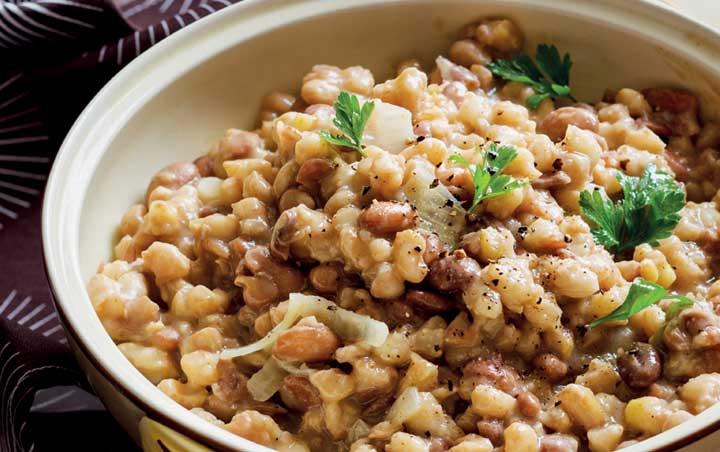
Botswana lunch dish. Combination of peas, beans and samp (processed maize), giving the dish a porridge-like consistency. All the ingredients are cooked in a small amount of fat or oil, and lightly seasoned with salt. It can be served and eaten plain by itself, or to be an addition to meat dishes. Most of the times served with the glass of milk.
Resi, Cyprus
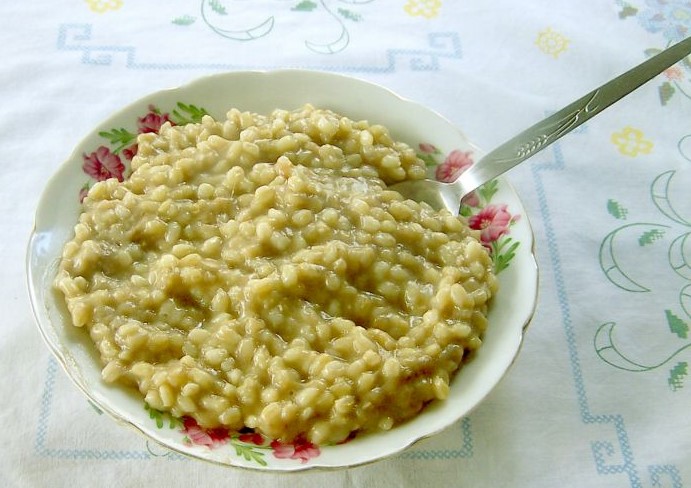
Resi is a traditional dish originating from Cyprus, and it is especially associated with the Paphos region. The preparation of resi is linked with village weddings, and it is a ritual where the lamb is slowly cooked over low heat, while friends and family of the bride and the groom gather to wash and grind wheat, which is then added into the pot with the lamb. Once cooked, the bones are removed, and the remaining combination of lamb and wheat is vigorously stirred until the porridge becomes smooth. Although it does not happen that often, the lamb can be substituted with pork or chicken.
Harees (jareesh, areesa and harissa), Armenia
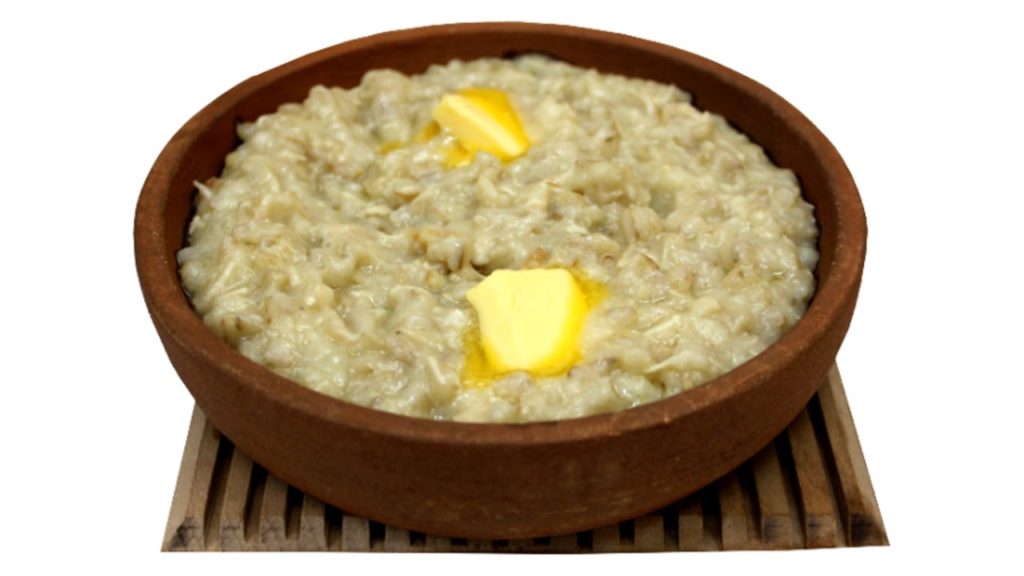
Dish eaten throughout Armenia, the Middle East and even found in India. Wheat (must be soaked before the day of cooking) is the main ingredient (there are different versions using oat and rice). Meat (lamb or chicken or mutton) cooked on the bones, then peeled of, and ponded into mushy consistency of porridge. Combined with cooked grains, to create uniform texture, unfortunately in pretty blend flavor. But can be mixed with cinnamon and cumin or garlic and cardamom, some crispy onions, ginger or even a squeeze of lime juice.
Oshifima, Namibia
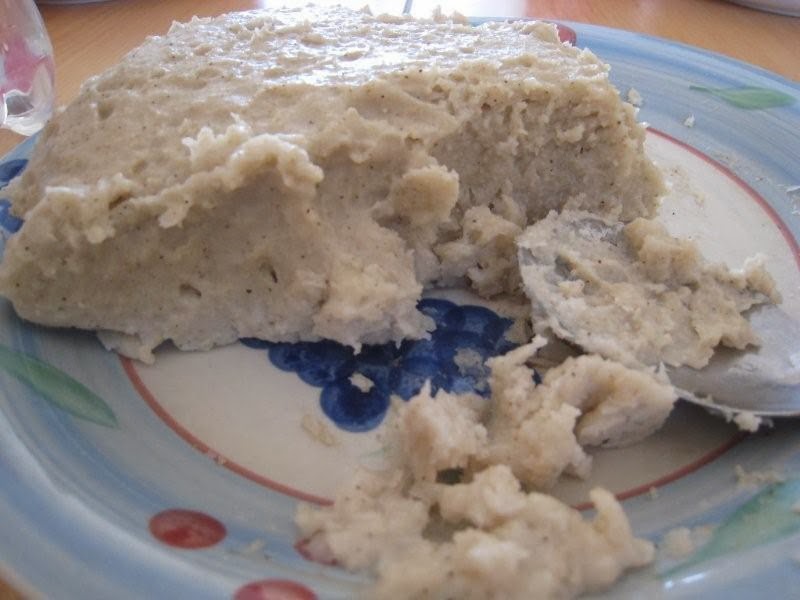
Namibian staple food. Eaten daily and providing people with necessary energy for the whole day. Made with a combination of mahangu (millet) flour and cornmeal. Mixture is boiled in water, till it develops a thick texture. Placed on a serving dish, and the center is hollow out. The main course inside the indentation, although it can also be served with different sauces inside the well, as well.
Cream of Wheat, USA
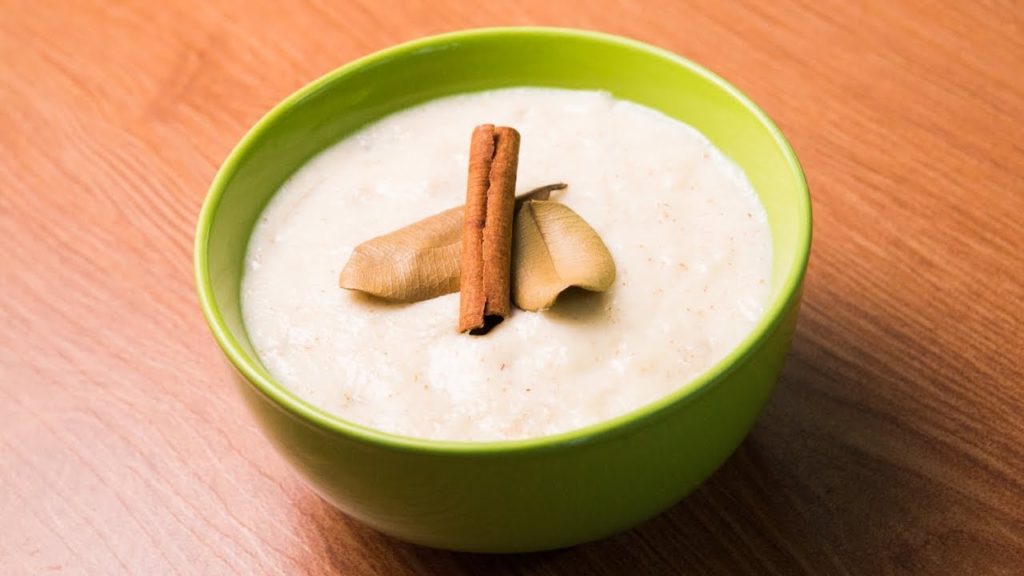
Fully instant, processed, and packaged brand of American semolina porridge. It can be boiled in milk or water with an addition of sugar or salt. It can be eaten by itself, or with as many additional ingredients, spices or toppings, and your heart desire. In appearance, quite like grits.
Papa, Lesotho
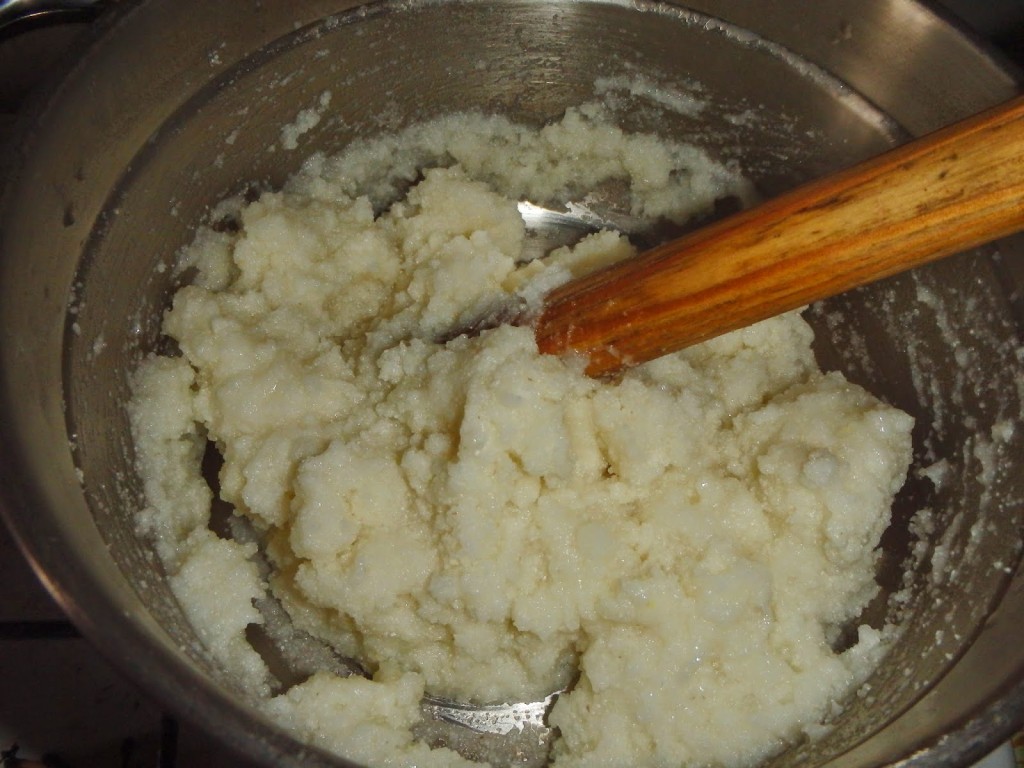
stiff porridge made from maize or corn. It starting as soft and mushy while cooking, but once it is cooled down, it becomes stiff and solid. It has almost no nutritional value, so it is almost always served with greens, beans, or with meat. In Lesotho, papa is traditionally eaten with the fingers.
Champorado, Philippines
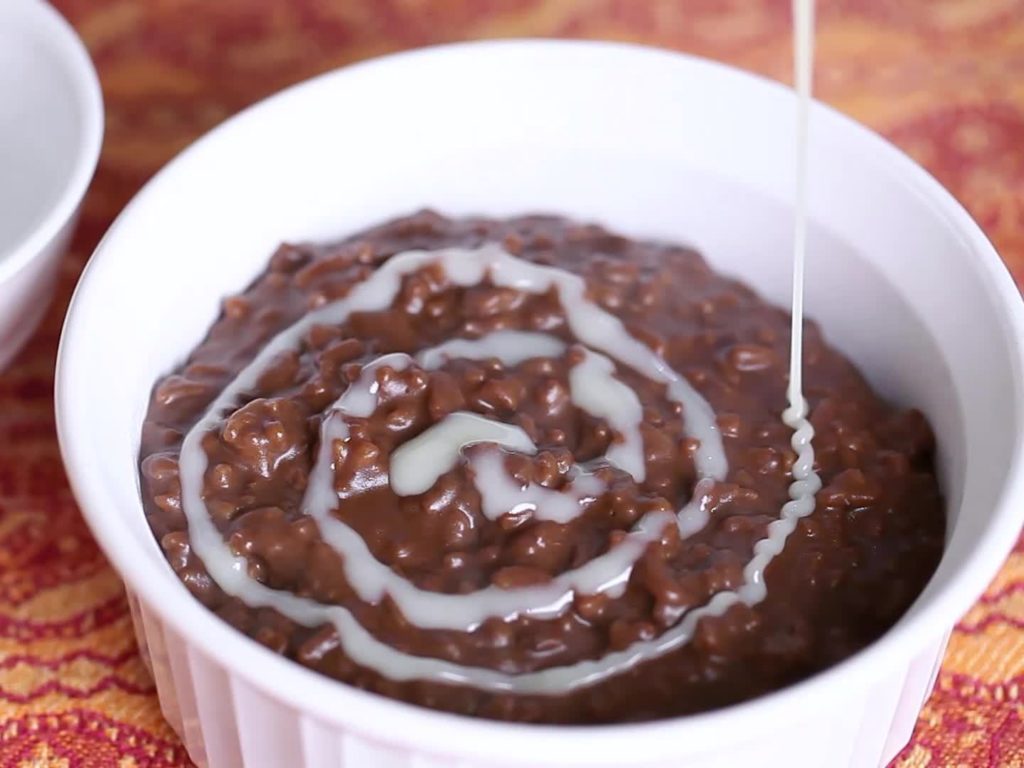
This time different take on porridge dish. Sweet chocolate rice porridge, immensely popular in Filipino cuisine. Sticky rice is cooked with cocoa powder. That is gives it that is characteristic dark (chocolate) color. Its is served as sweet breakfast or dessert, with milk and sugar to make it taste sweeter
Grutjespap, Netherlands
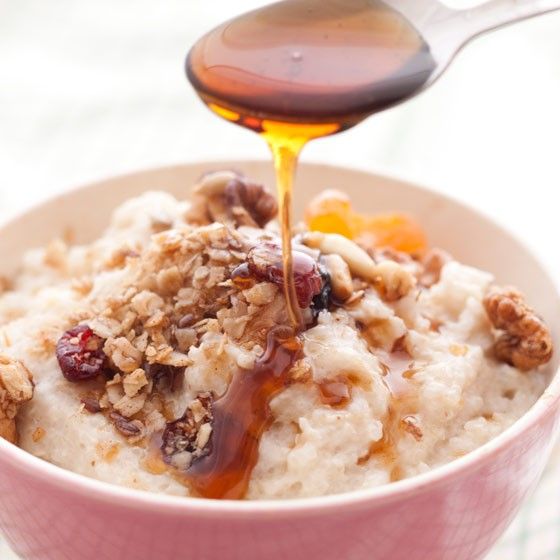
Buckwheat porridge. It is cooked with milk and pinch of salt. Boiled together to desired consistency. Its cam be serves as sett breakfast, or snack, lunch, or desert. Always served with caramel (stroop) drizzled over the top.
Kasza manna, Poland
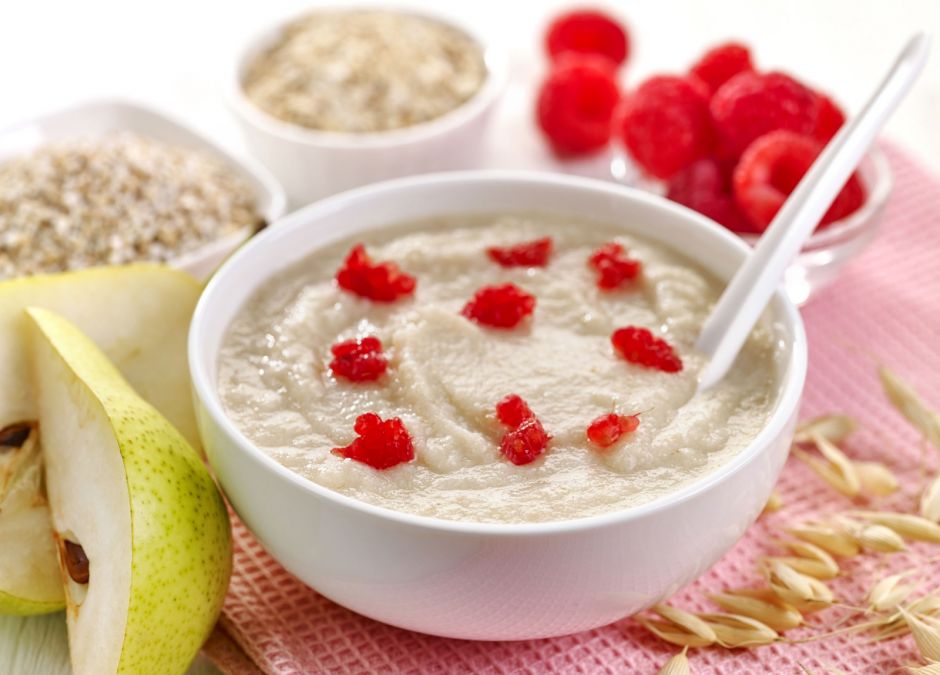
In Poland is served as sweet dessert, or homemade baby food. It is exceedingly simple. Semolina need to be cooked in milk (sometimes with one teaspoon of butter), to desired consistency. It can be almost drinkable, or much thicker texture. Served traditionally topped with fruit compote, or homemade jam.
Dhindo, Nepal
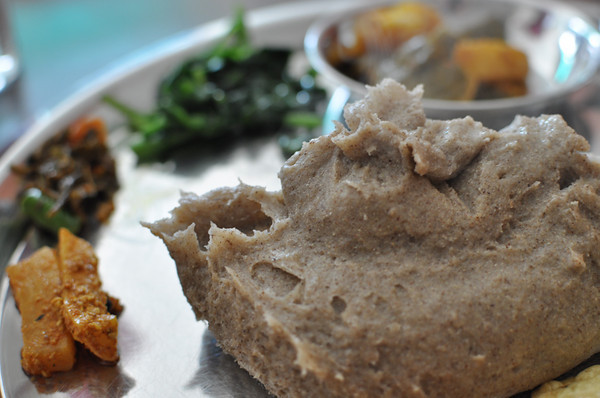
Thick porridge prepared from ground millet or cornmeal flour. It is traditionally cooked in a cast iron pan (taapke). This dish is extremally popular in high mountain regions, where wheat and rice are difficult to grow. The porridge itself, need to be eaten as soon is cooked (because it hardens very quickly, when it cooks down) is often paired with pickles, yogurt, curried vegetables, or homemade butter.
Karnemelksepap, Netherlands
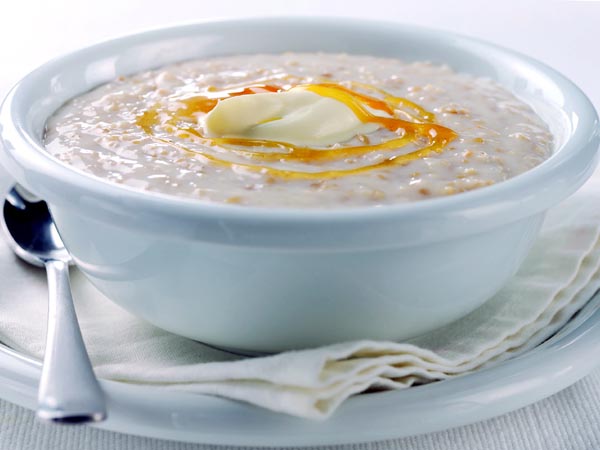
Dutch porridge made with buttermilk, flour, and salt. The combination is boiled until it become slightly thick and creamy in texture. Often flavored with brown sugar, stroop(caramel), or molasses. The dish has a tart, sour flavor, but that is make it extremely refreshing dessert for hot summer months.
Owsianka, East European (Russia, Poland, Belarus, Ukraine)
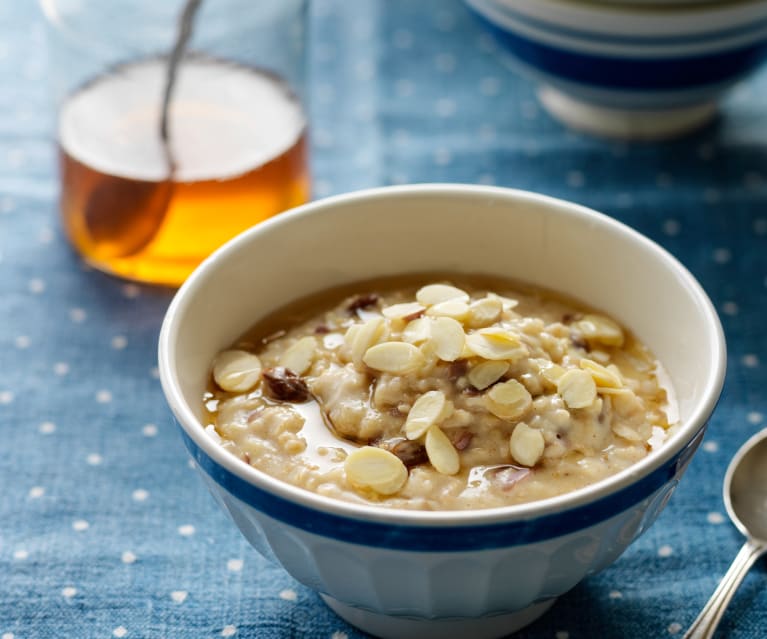
traditional breakfast porridge made with hot milk and oats. It is usually enriched with sugar and butter. Sometimes fresh, or dried fruits are added.




kaszka manna z sokiem malinowym najlepsza😁
a patrz, ja nigdy jej nie lubilam
Yummy 😋😋😋🍚
🍜🍜🍜🍜🍜
This post is amazing!!! Love it
Thank you. im so happy to know that You like it !